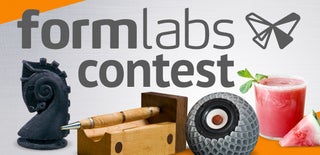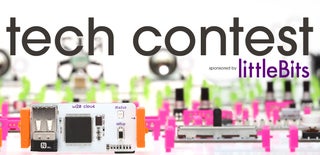Introduction: Small Arduino CNC
This instructable shows you how to build a cheap and easy, but very small CNC. You can use it to mill thin balsa wood and different foams. Everything you need, can be found in old PC's or can be bought quite cheap (I paid ~30$). It was inspired by the Pocket laser engraver, but i added a third axis and now I am able to mill small 3D objects.
For this project you will need:
- 3 old CD/DVD-Roms
- 1 Computer power supply
- 1 PC fan
- 1 small DC motor
- 3 Easydriver boards (can be bought on ebay ~2$ each)
- 1 Arduino Uno (can be bought on ebay ~14$)
- Screws, spacers, soldering iron, cables (old ribbons from PC's also work), some wood, a breadboard, screw terminals and some other supplies.
Step 1: Take Apart Your CD-Roms
Opening the CD-Roms isn't really hard. Just find yourself some old CD-Roms and follow the steps shown in the pictures. Even if your CD-Roms look a bit different, you shouldn't have many problems opening them.
Step 2: "Hack" the Power Supply
Before hacking the power supply, please make sure it isn't plugged in.
Hacking a power supply is easy. You only have to connect the green cable with a black cable (ground). Make sure not to solder the two, because in case of a short circuit you have to disconnect the two cables and reconnect them in order to reset the fuse in the power supply (It's a good idea to put in a switch).
The power supply will start running, as soon as the green cable is connected to the ground. Now you have a DC power supply!
To use the power supply, strip a red cable (5V) and a black cable (ground). It is also useful to strip a yellow cable (12V) or an orange cable (3,3V) for the milling motor and a cooling fan. Put the stripped cables into a clamp.
Step 3: Build the Structure
This part isn't really complicated. You just need a platform (mine is 13,5 cm x 17 cm but other sizes are also ok) and two pillars (mine are 24 cm high). I made them from wood, as it is very easy to cut and i can put screws into it.
After you have your wooden parts, simply screw the pillars onto the platform. (Make sure that your slides fit onto the platform and in between the pillars, as some slides are a bit taller or smaller).
Step 4: Soldering and Wiring
You have to solder cables onto the stepper motors. It's a bit tricky, as there isn't much space for soldering, so you need patience and a calm hand.
You can simplify this step, if you solder the cables onto the ribbon cable, which is already attached to the steppers. Just cut in between the tracks, and you can solder the cables to the ribbon cable. To avoid short curcuits, insulate the connections.
To make the device look better in the end, i used a stapler and stapled the cables to the wood. It looks nicer and more organised.
Step 5: Build the Axis
Since there isn't the possibility to put screws into your slides, you have to take a good glue (I used a two-component adhesive). Cut a wooden platform for the base axis (the Y-Axis) and glue it to the plastic on the slide.
After that, glue a piece of wood, which is as wide as your Z-Axis slide, to the X-Axis.
When your glue is dry, drill holes into the large piece of wood, which is attached to your X-Axis. The holes have to match the distance of the holes, which are in your Z-Axis slide.
Now that everything is prepared, you can screw the Y-Axis to the ground and the X-Axis onto the two pillars. When this is done, you can attach the Z-Axis to your X-Axis. Note: You will need spacers and washers, because the holes in the slides are too big for most screws. You also have to make sure, that the slides have no contact to the platforms and can move freely.
If you want you can add a metal platform to your base. You can take the metal from an old CD-Rom housing, and glue it to your platform (It's useful to have a metal platform, as you can hold your PCB's with magnets instead of duct tape).
Step 6: Attaching the Easydrivers and the Arduino
Now that the structure is finished, you have to wire your motors to the Easydrivers and the Arduino. There are two ways of doing it.
The easier and faster way is to put all your Easydrivers into a breadboard and connect them to the Arduino.You can wire it as shown on the image which was done with the Fritzing App.
The other way is to build a PCB. The disadvantage is, that you have to solder a lot, but you can build the PCB as a shield and directly attach it to your Arduino.
As mentioned in the picture, you should also add a fan to cool the Easydrivers and the Arduino (Espacially if you want to put them into a housing).
Now you only have to find out, which pin of your steppers, has to go to which pin on your Easydrivers. Again it is useful to look at your ribbon cables. Normalwise you have to attach the cables to your Easydrivers in the same way as they are connected to the stepper.
Step 7: The Spindle
The spindle consists of a DC motor and two screw terminals. It is important, that the motorshaft has the same size as the cutter, to decrease vibrations and increase precision.
Cut the metal parts out of the screw terminals. After you have the metal parts, attach one side of the metal part to the motor and the other one to the cutter. Tighten the screws and attach the second metal part 180° turned. Put it on top of the first metal part (the second metal part is needed as a counter weight, to minimize vibrations and increase precision).
When your spindle is finished, attach it to the Z-Axis. I used a metal part lying arond, but many motors also have attachment points on the front which you can use.
Make sure to use a light motor, as your Z-Axis can't lift heavy objects!
Step 8: The Software
The last step is the software. You have to download and install the Arduino software
the Grbl library and the Grbl controller.
After downloading the Grbl library, you have to click sketch --> import library --> add library in the Arduino software and select the zip file you just downloaded. Now send the library to your Arduino (your Arduino has to be connected via USB). There is also a more detailed discription on how to install Grbl --> Install Grbl
After you installed Grbl on your Arduino open the Grbl controller and select the port to which your Arduino is connected. Press the open button.
Now a list of options appears in the command screen. You have to change a few of these options, by entering the number of the option (the numbers with a $) = and the new value (For example $130=35.000). You may need to experiment a bit, but the options shown in my screenshot should work.
If your motors are moving into the wrong direction, go to Tools --> Options --> Axis and click the axis you want to invert.
Step 9: Milling
After you finished the CNC you can start milling. Just produce a file and transform it into gcode. Now send it to your mill and start milling (Keep in mind that your objects have to fit the small dimensions of this CNC).
Note: When starting Grbl controller it's automatically in alarm mode. Before milling, you have to switch it of by entering $X into the command field.
To produce files for your CNC, you can use Inkscape with the add on Gcodetools both programms are freeware. But you can also use any other programm.
In my example i milled a star into floral foam. The material is really soft and can be milled even with a drill instead of a cutter. I attached the foam with double faced tape.
If your bed is correctly leveled and you use a cutter, it could also be possible to produce small PCB's. PCB's can be attached with magnets, as I have a magnetic platform, which was made out of a CD-Rom case.

Participated in the
Formlabs Contest

Participated in the
Tech Contest

Participated in the
Remix Contest










